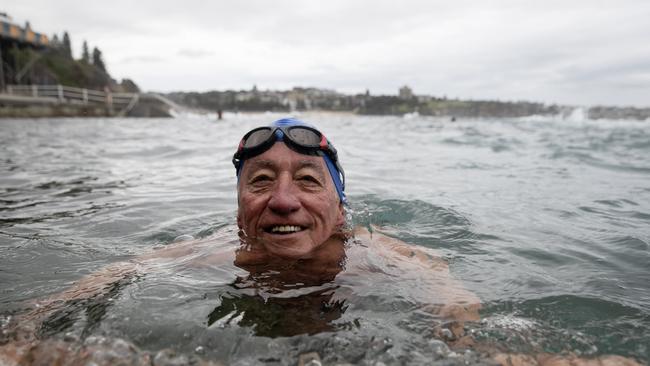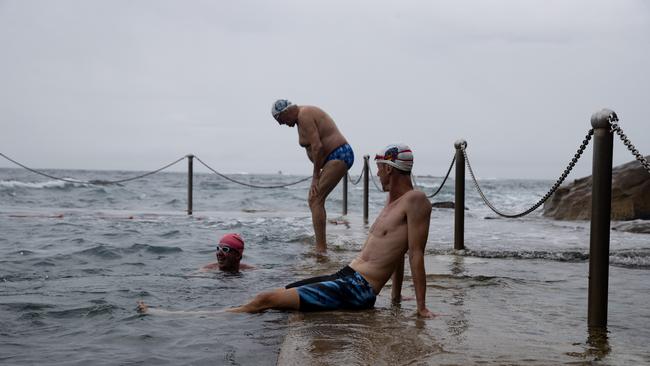Cold, hard facts point to winter swimmers’ health secret
The secret to combating a growing waistline, more energy and better health could be as simple as an icy dip on a cold winter’s day.

The secret to combating a growing waistline could be as simple as an icy dip on a cold winter’s day, new scientific evidence suggests, as cold water swimming takes the world by storm.
Winter swimming has been part of Scandinavian cultures for decades and found popularity in Australia through the infamous Bondi Icebergs – who go as far as putting ice blocks in the water – and the Coogee Penguins, with converts swearing by the restorative powers of a cold swim.
It’s now a global phenomenon thanks to Dutch extreme athlete Wim Hof, known as the Iceman, who advocates a combination of ice baths with breathing methods to boost immunity and energy.
But University of Copenhagen expert Camilla Scheele, a leading researcher in brown adipose tissue, or brown fat, believes the health benefits are backed by science with the cold found to stimulate brown fat to generate heat, produce energy and consume fat.
“Brown fat, when you compare to white fat, is a tissue that can still store fat,” she said.
“But it doesn’t only store fat, it can activate heat-producing procedures, so when we feel cold it sends signals to the brain, and then from the brain the signal goes out to the brown fat.
“Then the brown fat cells start to produce heat and consume the fat, so it’s like fat consuming fat.”
Associate Professor Scheele, in Melbourne for the World Obesity Congress, said the exact interaction between ice swimming and weight loss was still being unravelled but her research found a compelling link between the practice and better health.

A study she led comparing a group of Danish men who practised winter swimming to a group of identical age and fitness levels who did not found the winter swimmers coped better with immersion in cold, produced more heat and consumed more energy.
“We don’t really know the exact link with ice swimming, but brown fat is activated by cold, so it’s a heat-producing organ,” she said.
“We have quite substantial amounts of it when we are infants. It’s important for body temperature regulation then it declines with age, and not all of us have it.
“But some people do and the ones who have it seem to have better cardio-metabolic health.”
Winter swimming has long been embraced by Mick McMahon the “Emperor Penguin” of the Coogee Penguins swimming club, who can be found almost every day at the baths that line Sydney eastern suburbs, even in the dead of winter.
“You go, what the hell am I doing down here? You question that but it’s a good start to the day,” the 76-year-old said.
Christine Devine, 74, of Coogee, has been winter swimming for 25 years and also swears by it.
“It’s very good for you mentally, it’s also good for you health wise; I’ve been swimming for that long and I think in all that time I’ve only had one cold,” she said.
“You’re not allowed to wear wet suits, that’s the point of winter swimming; anyone could go with a wetsuit but it’s only for the people who are really strong and want the health benefits.”




To join the conversation, please log in. Don't have an account? Register
Join the conversation, you are commenting as Logout